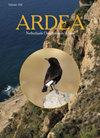Sanderlings Feed on a Diverse Spectrum of Prey Worldwide but Primarily Rely on Brown Shrimp in the Wadden Sea
IF 1.3
4区 生物学
Q3 ORNITHOLOGY
引用次数: 2
Abstract
Knowing what birds eat is fundamental to understand the ecology and distribution of individuals and populations. Often, diet is assessed based on field observations and excrement analyses, which has previously been the case for Sanderling Calidris alba. This may have biased their known diets towards large prey with indigestible body parts that can still be recognized in faeces or regurgitations. A literature review of Sanderling diet worldwide showed that Sanderlings exploit a large diversity of prey. We carried out DNA metabarcoding on Sanderling faeces to get a complete view of their diet in the Wadden Sea during staging and moult from late July to early October. Given the diversity of available prey in the Wadden Sea, it was remarkable that 94% of the samples contained Brown Shrimp Crangon crangon which, next to the Shore Crab Carcinus maenas, were also the most abundant species in the samples. This study shows that whereas Sanderling can feed on a large variety of invertebrates, in the Wadden Sea during southward staging they primarily rely on Brown Shrimp三鲱鱼在世界范围内以各种各样的猎物为食,但主要以瓦登海的褐虾为食
了解鸟类吃什么是了解个体和种群的生态学和分布的基础。通常,根据实地观察和排泄物分析来评估饮食,Sanderling Calidris alba以前就是这样。这可能使它们已知的饮食偏向于大型猎物,这些猎物的身体部位无法消化,但仍能在粪便或反刍物中识别出来。世界范围内对桑德林饮食的文献综述表明,桑德林利用了大量多样的猎物。我们对Sanderling粪便进行了DNA代谢编码,以全面了解它们在7月底至10月初的繁殖和蜕皮过程中在Wadden海的饮食情况。考虑到瓦登海可用猎物的多样性,值得注意的是,94%的样本中含有褐虾Crangon Crangon,它也是样本中数量最多的物种,仅次于滨蟹Carcinus maenas。这项研究表明,尽管桑德林可以以各种无脊椎动物为食,但在南部的瓦登海,它们主要依赖褐虾
本文章由计算机程序翻译,如有差异,请以英文原文为准。
求助全文
约1分钟内获得全文
求助全文
来源期刊

Ardea
生物-鸟类学
CiteScore
2.10
自引率
0.00%
发文量
49
审稿时长
>12 weeks
期刊介绍:
Ardea is the scientific journal of the Netherlands Ornithologists'' Union, and is published since 1912. The journal welcomes manuscripts reporting significant new findings in ornithology, in particular those covering the ecology, life history, and evolution of birds, and including sound descriptive work. Ardea publishes Original research papers, Short notes and Book reviews. In addition to the regular three issues per year, Ardea publishes specials that contain conference or workshop proceedings (produced on request).
 求助内容:
求助内容: 应助结果提醒方式:
应助结果提醒方式:


